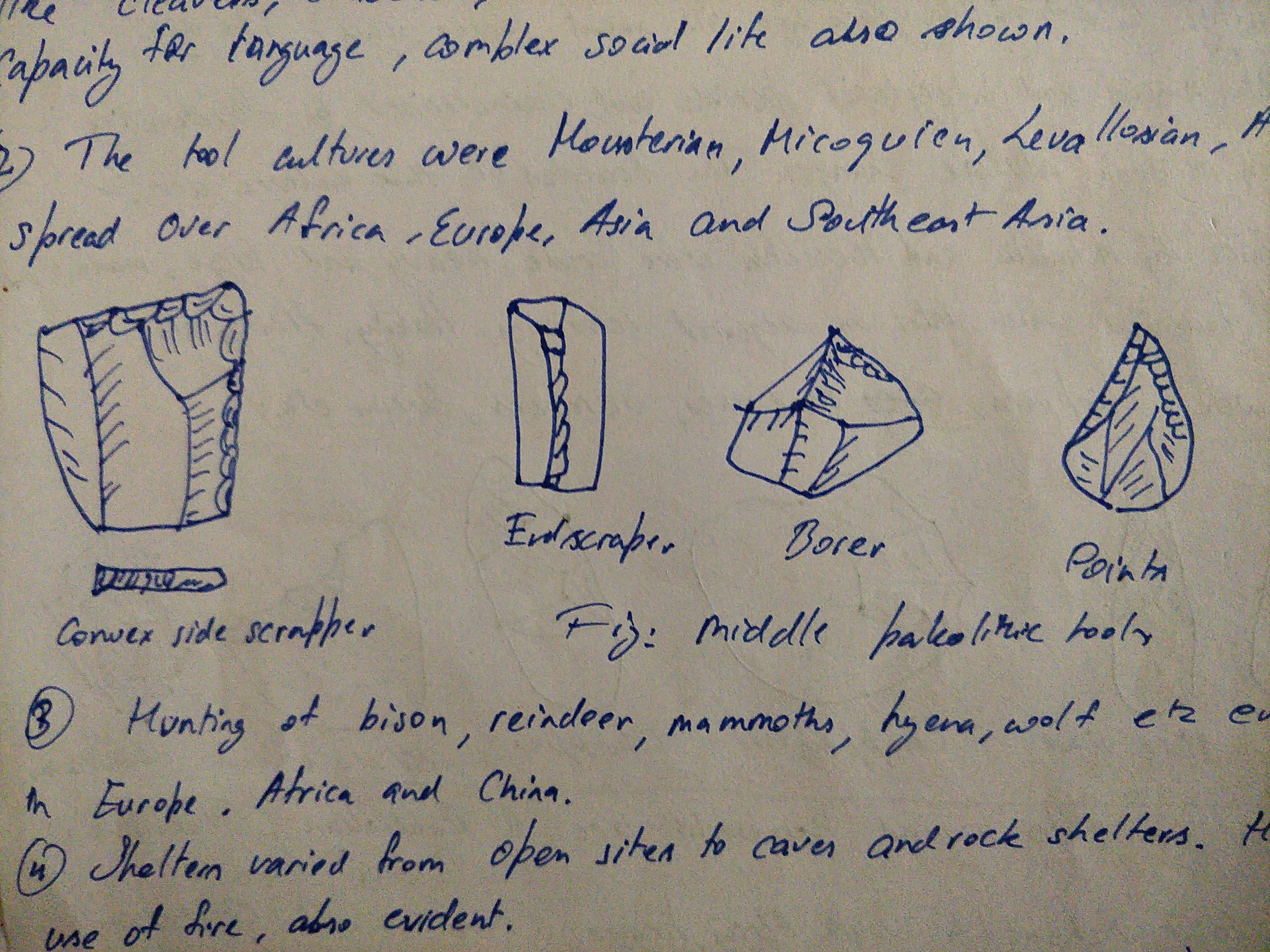Middle paleolithic 2-2
300,000 to 40,000. Strauss 1989.

Climate. Quaternary period. Spanning periodic glaciations ( mindel to wurm ). Neandertal to human.
Tools. Acheulian and Levallois technique. Point tool. Side scraper. Borer. Hand axe and cleaver become smaller. Quartzite and softer tools : quartz, agate, Jasper, flint.
Regional variations
India. Bhimbetka. Kurnool. Nevasa best - flake tools with levallois technique.
Euro. Mousterian culture (scrapers and points) levallois technique. Side scrapers and points. Le moustier, France. Small number of hand axes and cleavers and big proportion of flakes. Re Touching of flakes seen. Possible hafting. (Schick and Toth, 1993)
East Africa. Post acheulian. Disappearance of handaxe and cleaver. Emergence of mousteroid culture with levallois technique. But handaxe continued in Uganda with flake technique it is called Sangoon tradition. Klasies river site. Point flakes. Parallel sided flaked blades. Burins. Scrapers.
Social life. Hunting gathering light and efficient tools. Division of labour based on age and sex. Egalitarian society band organisation. First evidence of burial. Language development. More reliance on fire. Open air as well as cave life. Big game hunting like mammoth and elephants. Screening of animals like fox for clothing.
Burial at le moustier and shanidar cave iraq.